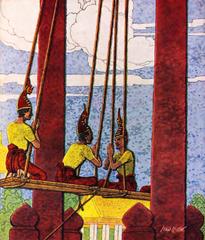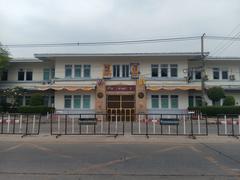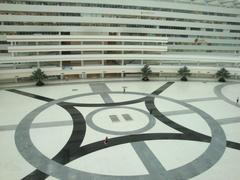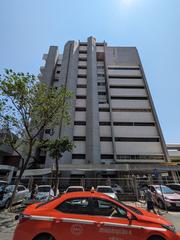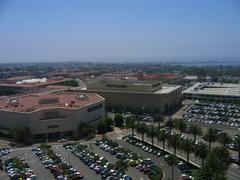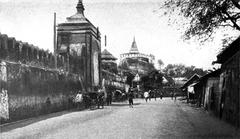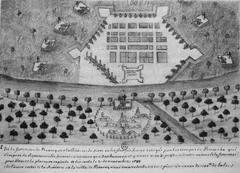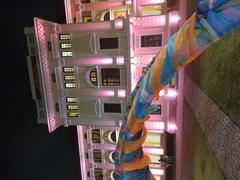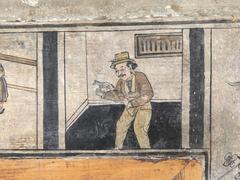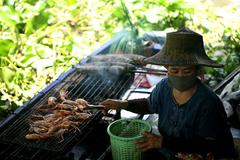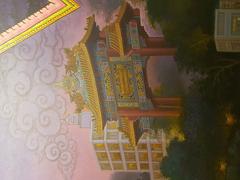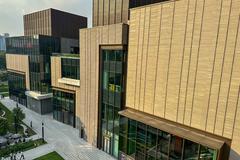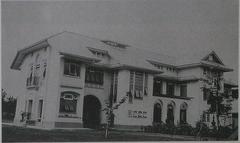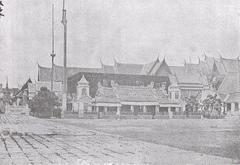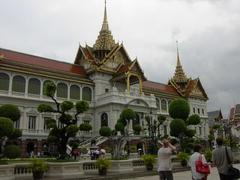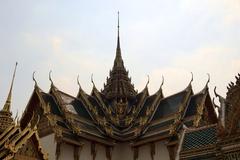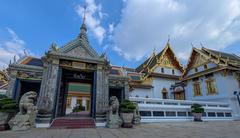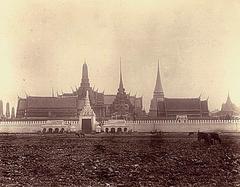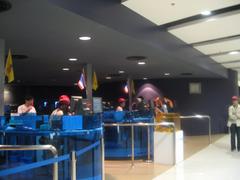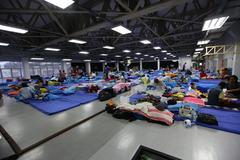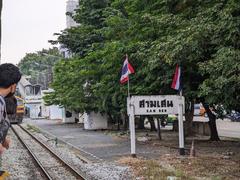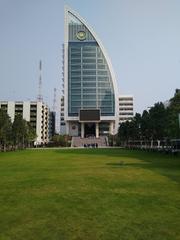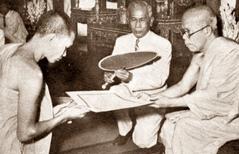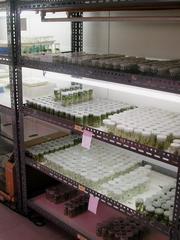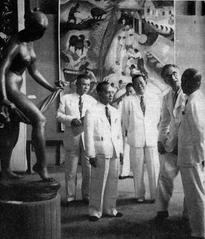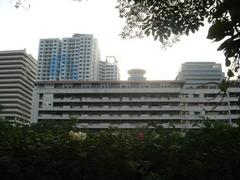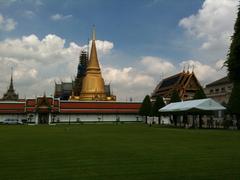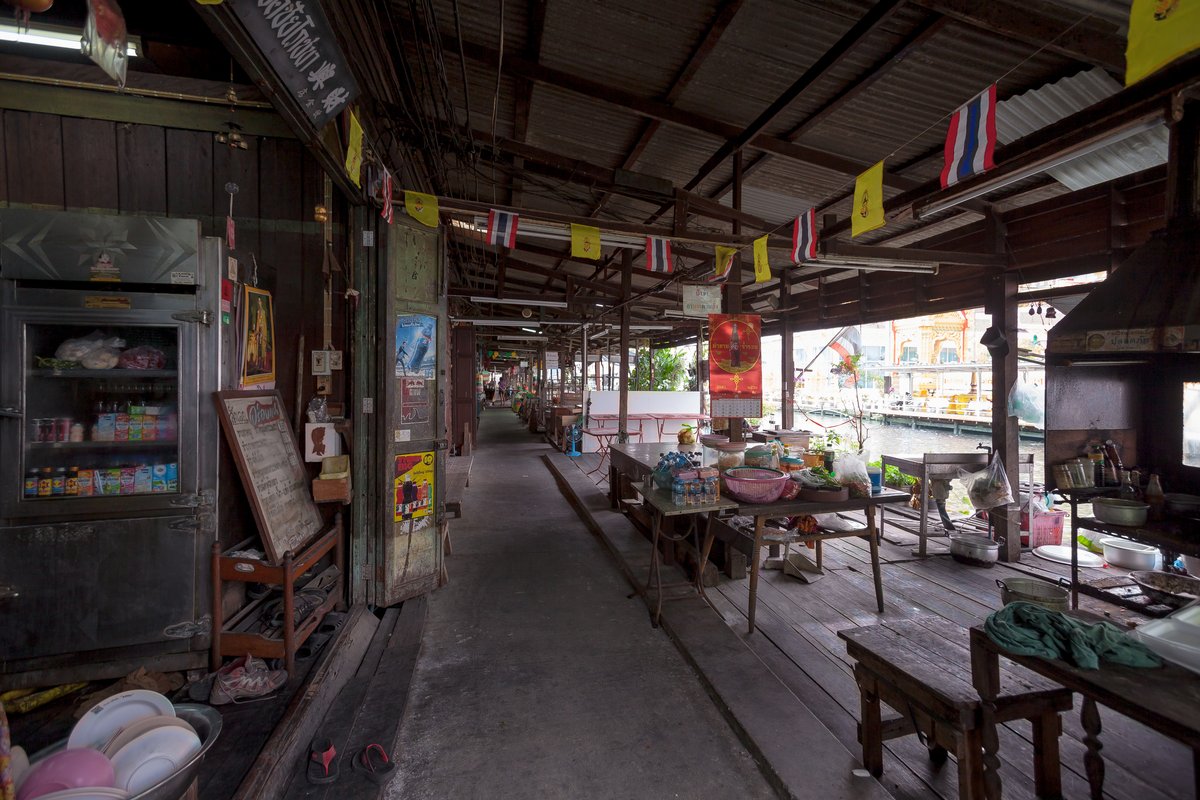
Comprehensive Guide to Visiting วัดนิมมานรดี, Bangkok, Thailand
Date: 23/07/2024
Introduction
Wat Nimmanoradee, located in the Bang Khun Thian district of Bangkok, Thailand, is a historic temple deeply embedded in the cultural and spiritual fabric of the region. Established during the reign of King Rama IV in 1866 and named after its founder, Phra Khru Nimmanoradee, the temple has served as a cornerstone of the local community for over a century (Wat Nimmanoradee Official Website). Known for its traditional Thai Buddhist architecture, the temple features intricate carvings, vibrant murals, and gold leaf accents that have been meticulously preserved through various renovations, including significant efforts under King Rama VI. Wat Nimmanoradee is not just a place of worship but a hub of cultural and educational activities, offering everything from meditation centers to traditional Thai music and dance classes. The temple’s rich history, combined with its role in pivotal historical events such as World War II, makes it a must-visit for anyone interested in Thailand’s heritage (Bangkok Post). This comprehensive guide aims to provide you with all the necessary information to make the most of your visit, from practical travel tips to insights into the temple’s cultural significance.
Table of Contents
- Introduction
- Founding and Early History
- Architectural Evolution
- Cultural and Religious Significance
- Role During Historical Events
- Modern Developments
- Preservation Efforts
- Community Engagement
- Annual Festivals and Events
- Educational Contributions
- Future Prospects
- Visiting Hours and Tickets
- Travel Tips and Nearby Attractions
- Accessibility Information
- Special Events and Guided Tours
- Photographic Spots
- FAQ
- Conclusion
Exploring Wat Nimmanoradee - History, Visiting Hours, and Tickets
Founding and Early History
Wat Nimmanoradee was founded in 1866 during the reign of King Rama IV as part of an initiative to expand Bangkok’s spiritual infrastructure. Named after its founder, Phra Khru Nimmanoradee, the temple has been a cornerstone of the local community for over a century.
Architectural Evolution
The temple showcases traditional Thai Buddhist architecture with intricate carvings, vibrant murals, and gold leaf accents. Significant renovations, including a major one under King Rama VI, have preserved its beauty and structural integrity.
Cultural and Religious Significance
Serving as a hub for religious ceremonies, Wat Nimmanoradee holds immense cultural value. The main hall, or ‘ubosot’, houses a revered Buddha image, and the temple’s library offers ancient scriptures and texts for scholars and practitioners.
Role During Historical Events
During World War II, Wat Nimmanoradee provided refuge and support to locals affected by bombings, highlighting its role as a community pillar.
Modern Developments
Incorporating modern facilities, Wat Nimmanoradee now features a meditation center and an active online presence. The temple attracts both local and international visitors (Wat Nimmanoradee Official Website).
Preservation Efforts
Preservation is a priority, with regular maintenance, mural restoration, and artifact conservation supported by community donations and international benefactors.
Community Engagement
The temple offers various programs, including educational courses, health workshops, and traditional Thai music and dance classes, reflecting its commitment to the community.
Annual Festivals and Events
Wat Nimmanoradee hosts vibrant festivals like Songkran and Loy Krathong, attracting visitors from across Thailand and beyond. These events feature traditional ceremonies and cultural activities.
Educational Contributions
Through its monastic school and library, Wat Nimmanoradee contributes significantly to education, offering a well-rounded curriculum and extensive resources.
Future Prospects
Plans for future development include expanding the meditation center, enhancing digital presence, and increasing community outreach, ensuring Wat Nimmanoradee remains a vital institution.
Visiting Hours and Tickets
Wat Nimmanoradee is open daily from 6:00 AM to 6:00 PM. Admission is free, but donations are welcome to support maintenance and community programs.
Travel Tips and Nearby Attractions
Visitors can reach Wat Nimmanoradee via public transport or taxi. Nearby attractions include Bang Khun Thian Museum and the vibrant local markets. Dress modestly and respect local customs.
Accessibility Information
The temple grounds are accessible to people with disabilities, with ramps and accessible restrooms available.
Special Events and Guided Tours
Guided tours are available upon request, offering deeper insights into the temple’s history and significance. Special events are regularly updated on the temple’s official website.
Photographic Spots
The temple offers numerous photographic opportunities, from its intricate architectural details to the serene temple grounds.
FAQ
What are the visiting hours for Wat Nimmanoradee?
The temple is open daily from 6:00 AM to 6:00 PM.
How much are tickets to Wat Nimmanoradee?
Admission is free; donations are welcome.
Conclusion
Wat Nimmanoradee stands as a testament to Bangkok’s rich cultural and historical fabric. Whether you’re a history enthusiast, a spiritual seeker, or a casual traveler, this temple offers a unique glimpse into Thailand’s heritage. Plan your visit today and immerse yourself in the timeless beauty and significance of Wat Nimmanoradee.
Stay updated with the latest events and initiatives by following Wat Nimmanoradee on social media or visiting their official website.
Visiting Wat Nimmanoradee - History, Cultural Significance, and Visitor Tips
Historical Background
วัดนิมมานรดี (Wat Nimmanoradee) is a significant Buddhist temple located in the Thonburi district of Bangkok, Thailand. Established during the reign of King Rama III in the early 19th century, the temple has a rich history that reflects the cultural and religious evolution of the region. The temple’s name, ‘Nimmanoradee,’ translates to ‘Heavenly Abode,’ indicating its intended purpose as a spiritual sanctuary.
Architectural Significance
The architecture of วัดนิมมานรดี is a blend of traditional Thai and Chinese influences, a common feature in temples built during the Rattanakosin period. The main ordination hall (ubosot) is adorned with intricate murals depicting scenes from the life of the Buddha and various Jataka tales. These murals are not only artistic masterpieces but also serve as educational tools, illustrating Buddhist teachings and moral lessons.
The temple complex also includes several chedis (stupas) and a viharn (assembly hall), each with its own unique architectural features. The chedis are particularly noteworthy for their elaborate designs and the relics they house, which are believed to hold spiritual significance (Bangkok Post).
Religious Practices and Festivals
วัดนิมมานรดี is an active center of worship and plays a crucial role in the religious life of the local community. Daily rituals, including morning and evening chanting, are conducted by the resident monks. These rituals are open to the public, allowing visitors to participate and gain a deeper understanding of Buddhist practices.
The temple is also a focal point for several important Buddhist festivals. During Visakha Bucha Day, which commemorates the birth, enlightenment, and death of the Buddha, the temple hosts elaborate ceremonies and processions. Similarly, during the Loy Krathong festival, devotees gather to float krathongs (decorative floats) on the temple’s pond, symbolizing the release of negative thoughts and the welcoming of good fortune (Tourism Authority of Thailand).
Educational and Community Role
In addition to its religious functions, วัดนิมมานรดี serves as an educational center. The temple runs a Buddhist school that provides both secular and religious education to local children. The curriculum includes traditional subjects as well as lessons in Pali, the liturgical language of Theravada Buddhism, and Buddhist philosophy.
The temple also organizes various community outreach programs, including meditation retreats, health clinics, and cultural workshops. These initiatives aim to promote social welfare and foster a sense of community among the residents of Thonburi (Bangkok Metropolitan Administration).
Art and Iconography
The art and iconography within วัดนิมมานรดี are rich in symbolism and reflect the syncretic nature of Thai Buddhism. The principal Buddha image in the main hall is a striking example of Sukhothai-style sculpture, characterized by its serene expression and graceful posture. Surrounding this central figure are smaller statues of various Bodhisattvas and guardian deities, each representing different aspects of Buddhist cosmology.
The temple’s murals are another highlight, depicting not only religious themes but also scenes from everyday life in 19th-century Thailand. These artworks provide valuable insights into the social and cultural context of the period, making the temple a treasure trove for historians and art enthusiasts alike (Thai Fine Arts Department).
Wat Nimmanoradee Visiting Hours and Accessibility
Wat Nimmanoradee is easily accessible by public transportation. The nearest BTS station is Wongwian Yai, from where visitors can take a short taxi ride to the temple. For those preferring to travel by boat, the Chao Phraya Express Boat service stops at the nearby Tha Chang Pier, followed by a brief tuk-tuk ride to the temple. The temple is open daily from 6:00 AM to 6:00 PM, and there is no entrance fee, making it an accessible destination for both locals and tourists. However, donations are always appreciated and go towards the upkeep of the temple and its community services (Bangkok Transit System).
Wat Nimmanoradee Tickets and Guided Tours
While there is no entrance fee to visit Wat Nimmanoradee, making a small donation is a common practice and helps support the temple’s maintenance and community programs. Consider hiring a local guide to gain deeper insights into the temple’s history and significance. Many guides are well-versed in English and can provide valuable context.
Visitor Tips
For those planning to visit Wat Nimmanoradee, here are some practical tips to ensure a respectful and enriching experience:
- Dress Code: Visitors should dress modestly, covering their shoulders and knees. This is a sign of respect for the sacred nature of the site.
- Photography: While photography is generally allowed, it is advisable to ask for permission before taking pictures of monks or during religious ceremonies.
- Quiet Reflection: Take some time to sit quietly and reflect. The temple grounds offer several peaceful spots ideal for meditation or quiet contemplation (Lonely Planet).
Cultural Etiquette
Understanding and respecting local customs is crucial when visiting religious sites in Thailand. Here are some key points to keep in mind:
- Removing Shoes: Always remove your shoes before entering any temple building.
- Bowing: A slight bow with hands pressed together in a prayer-like gesture (wai) is a common way to show respect.
- Monk Interaction: Avoid direct physical contact with monks, especially if you are a woman. If you need to hand something to a monk, place it on a table or use a male intermediary.
- Quietness: Maintain a quiet demeanor, especially during prayer times and ceremonies (Cultural Atlas).
Nearby Attractions
To make the most of your visit to the Thonburi district, consider exploring nearby attractions such as the Wat Arun (Temple of Dawn), the Royal Barges National Museum, and the Thonburi canals.
FAQ
What are the visiting hours for Wat Nimmanoradee?
Wat Nimmanoradee is open daily from 6:00 AM to 6:00 PM.
How much does it cost to visit Wat Nimmanoradee?
There is no entrance fee, but donations are appreciated.
Are guided tours available?
Yes, guided tours are available and highly recommended for a deeper understanding of the temple’s history and significance.
Conclusion
Wat Nimmanoradee is not just a historical and cultural landmark but also a living religious and community center. By respecting local customs and participating in temple activities, visitors can gain a meaningful and enriching experience. Don’t forget to check out nearby attractions to make the most of your visit to the Thonburi district.
Summary and Key Points
Wat Nimmanoradee stands as a testament to Bangkok’s rich cultural and historical heritage. Its intricate architecture, vibrant festivals, and community-focused initiatives make it more than just a religious site; it is a living, breathing part of the local culture. Whether you are a history enthusiast, a spiritual seeker, or a casual traveler, Wat Nimmanoradee offers an enriching experience that provides a unique glimpse into Thailand’s past and present. The temple’s commitment to preservation and community engagement ensures that it will continue to be a vital institution for years to come. By respecting local customs and participating in temple activities, visitors can gain a meaningful and immersive experience. Don’t forget to explore the nearby attractions and make the most of your visit to the Thonburi district (Tourism Authority of Thailand). For more information, stay updated through the temple’s official website or follow them on social media.
References
- Exploring Wat Nimmanoradee - History, Visiting Hours, and Tickets, 2024, Author Wat Nimmanoradee Official Website
- Visiting Wat Nimmanoradee - History, Cultural Significance, and Visitor Tips, 2024, Author Bangkok Post
- Visiting Wat Nimmanoradee - History, Cultural Significance, and Visitor Tips, 2024, Author Tourism Authority of Thailand
- Ultimate Guide to Visiting Wat Nimmanoradee - Hours, Tickets, and Top Attractions in Bangkok, 2024, Author Wat Arun
- Ultimate Guide to Visiting Wat Nimmanoradee - Hours, Tickets, and Top Attractions in Bangkok, 2024, Author Wang Lang Market
- Ultimate Guide to Visiting Wat Nimmanoradee - Hours, Tickets, and Top Attractions in Bangkok, 2024, Author Royal Barge Museum

